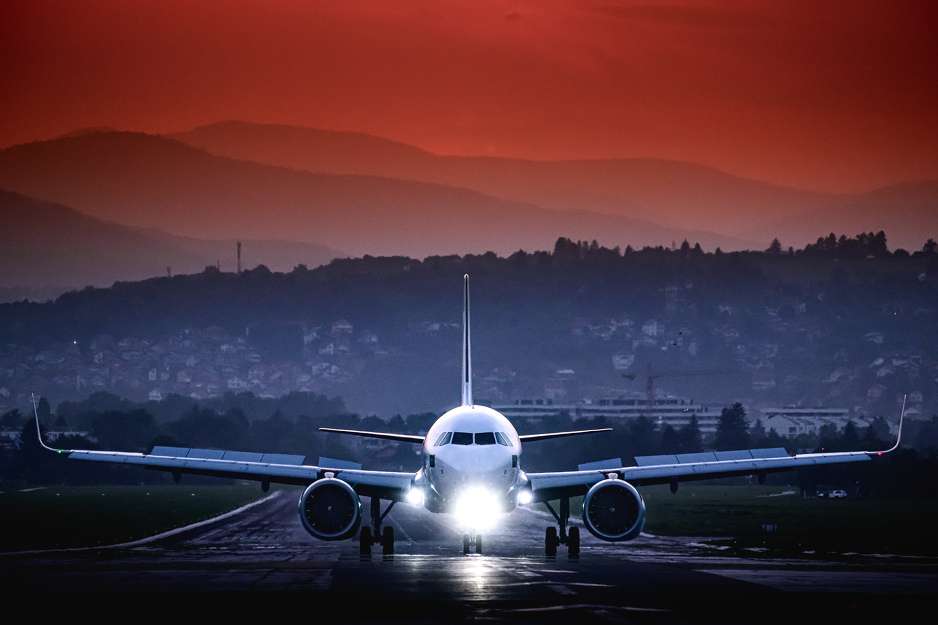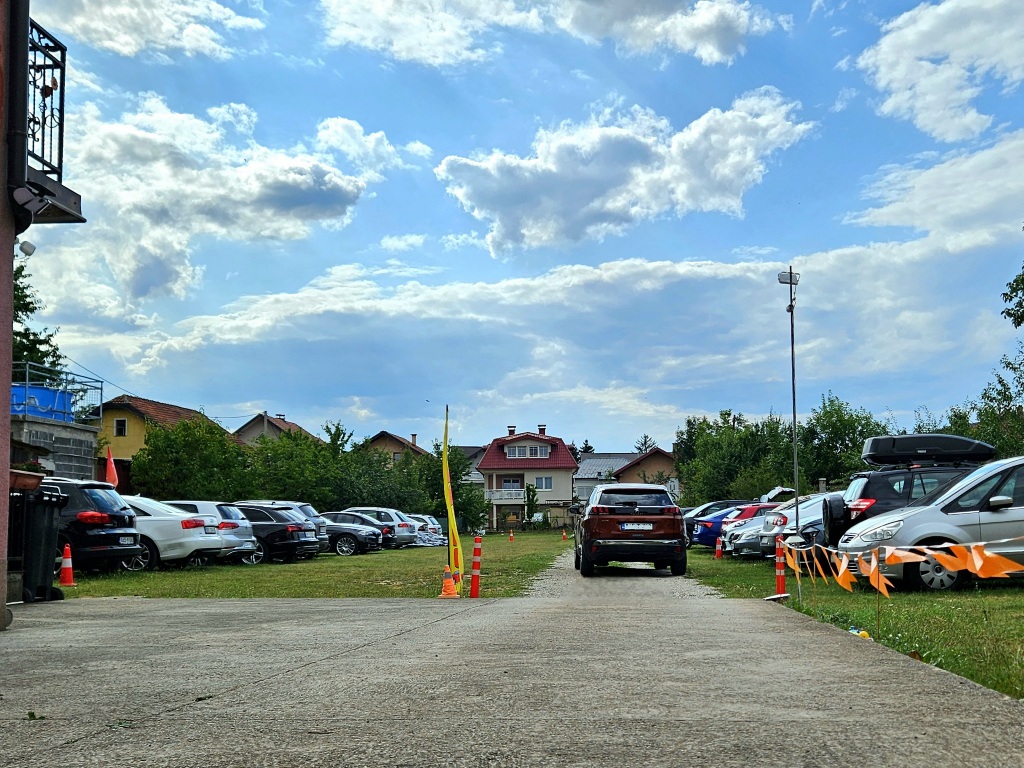Sarajevo Airport is one of the busiest and most modern airports in Bosnia and Herzegovina, serving more than a million passengers each year. But did you know that this airport has a very rich and interesting history, dating back to 1930? In this article, we will reveal some of the most interesting things and stories about Sarajevo Airport, which is one of the oldest and most important airports in the region.
The first flights from Sarajevo
The story of Sarajevo Airport begins back in 1930, when the Belgrade-Sarajevo-Podgorica airline was introduced, operating three times a week. From that time until today, the airport has changed locations, grown and developed in accordance with its needs and capabilities. Back then, smaller passenger planes were in use, and during that period, the former military airport at Rajlovac was used, which was the first airfield ever in the city of Sarajevo.
After the end of World War II, in 1947, regular civil air traffic to Sarajevo was re-established. At that time, the airport in Butmir began to be used, not far from the site of the current airport. The earliest beginnings The traffic was carried out by the newly formed Yugoslav-Soviet company "JUSTA", which operated for a little over a year, because by decision of the Government of the then Federal People's Republic of Yugoslavia (FNRJ) due to the conflict with the USSR, the domestic company Yugoslav Air Transport (JAT) was founded. The core of JAT's fleet at that time consisted of Dakota (DC-3) aircraft with 24 passenger seats, and the legendary DC-3 that was in operation for the next 22 years.
Construction of a new airport
Due to increased needs, the idea of building a completely new airport was put into practice. After many years of analysis and examination of the location of the future airport, it was decided that it would be located in Sarajevo Field, in the immediate vicinity of the existing grassy Butmir airport. The construction itself began in late 1965 and lasted a little over three years. The necessary airport infrastructure was built, including a runway, taxiways, apron and more. The control tower was also part of the airport building. Radio navigation (R/NAV) equipment at the airport enabled the reception of all types of aircraft in night flying and complex weather conditions. Finally, on June 2, 1969, “Sarajevo-Ilidža Airport”, as it was then officially called, spread its wings for civil air traffic. It was a project that was of essential importance for the development of the city at the foot of Trebević. The opening of the first international airport meant only one thing - Sarajevo opened its doors to passengers, traffic and goods from all over the world.
A year later, in 1970, the first international flight to Frankfurt, Germany, was established. Sarajevo's bid to host the 1984 Winter Olympics also necessitated the expansion of the airport's capacity. This involved extending the existing runway by 150 meters, building a completely new parallel taxiway, a new terminal, and an Air Traffic Control facility with a new control tower. This made Sarajevo Airport one of the best-equipped airports in this part of Europe at the time. Technologically, in terms of personnel, and in every other way, it was ready to host the world's best winter athletes and numerous tourists.
Aggression and reopening
The aggression officially began, in a way, with the occupation of Sarajevo Airport, which was occupied by units of the former Yugoslav People's Army (JNA). On the night of April 4–5, 1992, the JNA — members of the Air Force Academy in Rajlovac — captured the airport and held it until mid-June. Then he handed it over to Serbian paramilitary units, who, having taken over the airport, began a general looting and destruction of equipment, radio navigation equipment and everything else that could not be transported to Belgrade and the territories under Serbian control. A sad period ensued. All civilian flights were completely suspended.
Since April 1996, part of the Airport has been managed by the civil authorities of Bosnia and Herzegovina. From that moment on, the fight began to return Sarajevo Airport to its true function — civil aviation. Part of the used equipment was donated to the Airport, the sorting hall was renovated and converted into an improvised terminal. After a short training in Turkey, the workers took up their long-awaited jobs. Sarajevo Airport opened for civil traffic on August 15, 1996. This event meant the fulfillment of the greatest dream of all employees. Immediately after the opening of the Airport, Croatia Airlines established a connection between Sarajevo and Zagreb, and the Turkish company Top Air between Sarajevo and Istanbul.
Interesting facts and anecdotes about Sarajevo Airport
In addition to its history, Sarajevo Airport also has many interesting facts and anecdotes that have occurred over the years. Here are some of them:
- Sarajevo Airport was one of the few airports in the world to have its own postage stamp. Namely, on the occasion of the opening of the new airport in 1969, a special stamp was issued with the motif of the airport and the DC-9 aircraft
- Sarajevo Airport was one of the first airports in Europe to have its own museum. The museum was founded in 1973 and contained numerous exhibits related to the history and development of the Sarajevo airport and aviation in general. Unfortunately, the museum was destroyed during the aggression on Bosnia and Herzegovina, and its restoration is planned.
- Sarajevo Airport was one of the most important places for humanitarian aid during the siege of Sarajevo. Namely, the airport was under the control of UNPROFOR, which organized air bridges to deliver food, medicine, fuel and other necessities to the population of Sarajevo. This operation was known as “Operation Sky Bridge” and lasted from July 1992 to January 1996. During that period, more than 12,000 flights landed at Sarajevo Airport with about 160,000 tons of humanitarian aid.
- Sarajevo Airport was one of the most dangerous airports for landing and taking off during the war. Namely, the airport was under constant fire from snipers and artillery from the surrounding hills, who tried to prevent humanitarian aid and the evacuation of the wounded and civilians. Many planes were hit and damaged, and some were even shot down. One of the most famous cases was the landing of the plane of French President Francois Mitterrand, who came to Sarajevo on June 28, 1992 to express support for the citizens. His plane was the target of snipers and grenades, but he managed to land and take off safely.
These are just some of the interesting facts and stories about the airport in Sarajevo, which was and remains a symbol of resistance, hope and pride of the city of Sarajevo and the whole of Bosnia and Herzegovina. If you have ever visited or plan to visit this airport, we hope you will enjoy its beauty and significance, and remember its glorious history.
For affordable private parking near this airport, always keep us in mind as your starting destination.




